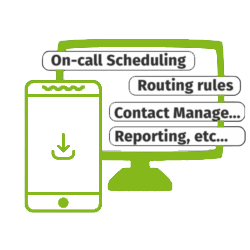What is it?
At its core, enterprise incident management is the process of providing incident management processes and technology to a specific team or business. IT often faces incidents which have the potential to disrupt or waylay the team or the company. To successfully and quickly resolve these critical incidents, teams need to have a carefully considered plan in place ahead of time.
Enterprise incident management brings together processes such as ticketing, alerting, escalations, reporting and documentation to the incident response team and the company as a whole so that there is a sustainable and repeatable process to minimize time to incident resolution.


















